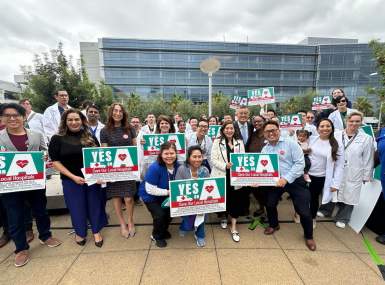CMS releases guidance on Medicaid and CHIP services for incarcerated youth
Author

Blaire Bryant

Brett Mattson

Naomi Freel
Upcoming Events
Related News

Key Takeaways
On July 23, the Centers for Medicare and Medicaid Services (CMS) issued new guidance in response to the Consolidated Appropriations Act, 2023 (P.L. 117-328) (CAA). This guidance addresses statutory requirements set forth in the CAA, impacting Medicaid and the Children’s Health Insurance Program (CHIP) services and eligibility for youth detained in public institutions including jails, prisons and juvenile justice facilities. The required coverage changes will take effect on January 1, 2025, and states must submit Medicaid and CHIP state plan amendments by this date.
Key provisions of the guidance
Medicaid Services:
- Eligibility: Youth under 21 who were enrolled in Medicaid before or during incarceration, including former foster care children, are eligible. States can receive federal funding for Medicaid services for eligible youth awaiting trial.
- Screenings and Diagnostic Services: States must provide medical and dental screenings and diagnostic services to eligible youth within 30 days before release and no later than one week after release, following EPSDT standards.
- Targeted Case Management: States must offer targeted case management services, including referrals, as part of the Medicaid state plan.
CHIP Services:
- Screening, Diagnostic, and Case Management Services: Similar to Medicaid, CHIP services must include screenings, diagnostic services, and case management 30 days before the release of eligible youth.
- Continuous Coverage: The CAA allows states to suspend or continue CHIP coverage during a child’s incarceration rather than terminate it. CHIP coverage cannot end at the conclusion of a child’s continuous eligibility period if they remain incarcerated. States must reassess CHIP eligibility before a child’s release and may extend CHIP coverage to youth awaiting trial.
Impact on counties
County governments operate 2,875 of the nation’s 3,160 local jails, admitting approximately 11 million individuals annually. Many of these individuals have mental health or substance use issues, with serious mental illnesses being three to four times more prevalent among jail inmates than the general population. Enhanced Medicaid and CHIP coverage for detained youth reduces the financial burden on county budgets and ensures that eligible individuals receive essential medical and dental care before and after their release, aiding successful reintegration into society. Medicaid agencies will need to collaborate with local justice system partners to implement this statute and related guidance effectively. Counties must work with state health officials to comply with the new requirements and secure federal financial support. To learn more, please view this webinar, “What Adult Jails Need to Know about Mandated Implementation of Medicaid for Detained Youths” or view the slide deck.
Offering a state option to continue Medicaid coverage for juveniles in pre-trial status addresses the issue of unfavorable health outcomes for juveniles and communities and reduces financial and administrative burdens on local jails. While this provision is a promising win for counties, more needs to be done to ensure continuity of care for incarcerated individuals across the country. NACo continues to work with federal partners to address these issues, ensuring that counties can better manage justice-related healthcare costs and improve health outcomes for their populations.
Featured Initiative
County Juvenile Justice Innovation Network
The County Juvenile Justice Innovation Network works to enhance counties' capacity to meet the needs of youth in local juvenile justice systems. Teams engage both virtually and in-person to share challenges and successes, learn from national and local experts and exchange ideas to empower youth and improve local outcomes.

Related News

CMS issues new guidance on Medicaid Community Engagement Requirements
On December 8, the Centers for Medicare & Medicaid Services (CMS) released a Medicaid and CHIP Services Informational Bulletin (CIB) directing states on how to implement the Medicaid community engagement requirements enacted under Section 71119 of the One Big Beautiful Bill Act legislation (Public Law 119-21), or H.R. 1.

California county sales tax measure backfills federal healthcare cuts
Santa Clara County, Calif. will raise an estimated $330 million each year from a sales tax to backfill lose Medicaid funding.
